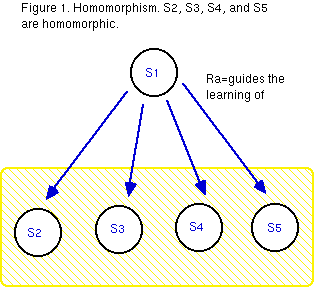 Educational Systems Theory
Educational Systems Theory Educational Systems Theory
Educational Systems Theory

An additional classroom example of homomorphism is content taught. Content in a typical classroom is the same for all students, and delivered to them in the same manner by the teacher or textbook.
190. If educational system homomorphism at time 2 is greater than homomorphism at time 1, then toput is nearly maximum and size degeneration is nearly maximum and complexity degeneration is nearly maximum.
 Go to SIGGS Home Page.
Go to SIGGS Home Page.